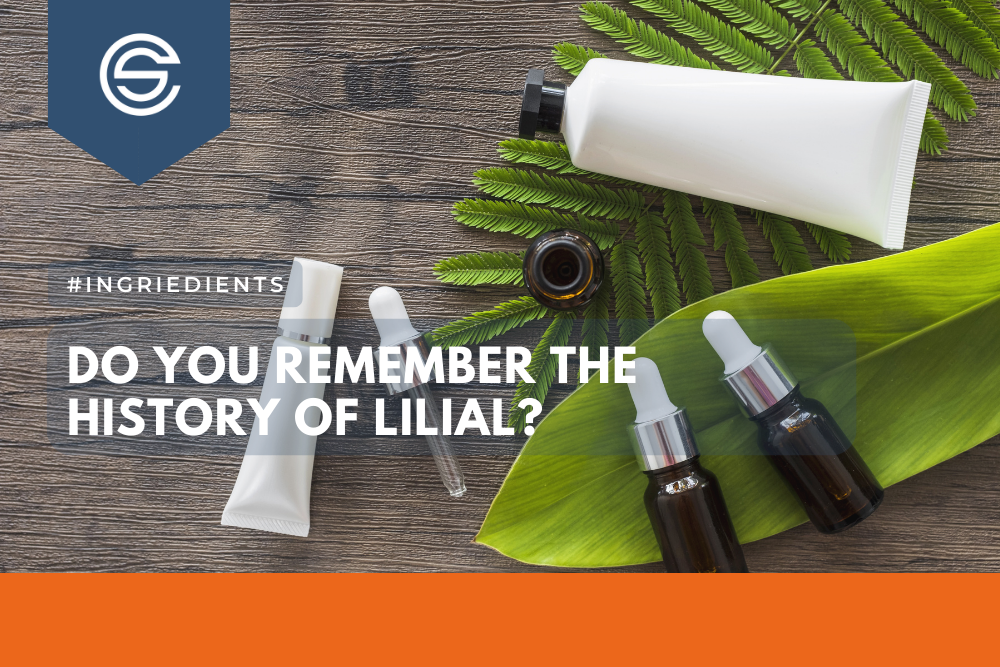#chemical-free, #natural … world
For years, we have been talking about the fact that “natural” isn’t equal to “safe” in chemistry and toxicology. However, to believe that some people still need illustrative examples. That’s why we’ve collected a few below.
In common opinion the synthetic fragrances are potentially dangerous, while natural essential oils don’t have such associations in our minds. Proponents of natural fragrances seems to forget what is the reason of recommendation of not using the essential oils in an undiluted/concentrated form onto the skin!
Both – synthetic and natural fragrances – in pure, undiluted forms pose a hazards for human health and the environment (we will write more about environmental impact in the following article). On the other hand, we have to remember that information about the content of a dangerous substance in a consumer product is not enough to assess the risk. For precise risk assessment we must have quantitative information about the content of the substance and how the product is used. Why? Because it is not the origin of the substance, but its nature (in the sense of potential hazards) confronted with the exposure conditions make the risk!
Below we have selected a few examples “illustrating” the above issues.
Fragrances toxicity
Fragrance materials are usually multicomponent mixtures (consist mainly with terpenes and phenylpropanoids), widely used in cosmetics, perfumery, aromatherapy, pharmaceutical or biocidal products.
Their natural content in food products makes us love the smell and taste of citrus, vanilla ice cream or rose jam… The pleasure and safety of use of such dietary ingredients results from the exposure conditions (even if the components of “fragrances/aromas” are toxic substances, we are exposed to their low concentrations under special conditions of use).
Acute poisoning with essential oils almost always results from accidental oral consumption of large amounts of undiluted oils. As a result, the exposed person may have seizures, nausea or vomits. In rare cases, poisoning can even lead to death. Many of these cases are caused by the oils most commonly used, e.g. from tea tree or eucalyptus oil. Remember, however, that acute poisoning with other, less popular essential oils is also possible.
As mentioned above – poisoning results from the oral consumption of large amounts of essential oils. What health effects should we think of when using essential oils on the skin? The most common are the local toxicity effects.
Skin irritation
It is the biological response of the skin to the applied substance. The response can be involved with the skin damage and inflammation, but without activating the immune system. Irritation – which can manifest itself as a red bubble or burn, for example – usually happens when essential oils contain large amounts of simple phenols, such as carvacrol or thymol (contained in significant quantities, e.g. in oregano or thyme oils); phenolic ethers such as eugenol (clove oil) or aromatic aldehydes, e.g. cinnamaldehyde (cinnamon).
Skin sensitisation
Consumers quite well understand the fact that “fragrances” can cause sensitization. Consequently, they quite well identify the so-called potential fragrance allergens that require labelling in the cosmetics composition on the label.
Historically, it was a list of 26 substances, but currently, it has been “shortened” by two items presently banned for use (INCI: Buthylphenyl Methylpropional and Hydroxyisohexyl 3-Cyclohexene Carboxaldehyde (HICC)). Both compounds are synthetic substances. The HICC has been prohibited exactly because of its very high sensitising potential.
The obligation to label potential fragrance allergens does not apply only to synthetic compositions – the same “allergens” are components of natural essential oils!
For example, lemon oil is over 90% limonene (INCI: Limonene), and lavender oil is mainly (INCI: Linalool) and its acetate. What is vital in the case of the allergens mentioned above and oils that contain them is the need for proper storage. Their sensitising potential increases significantly if they are exposed to oxidation processes. Let’s remember that!
Which essential oils sensitise the most? An unequivocal answer is not easy because we have to analyse the wide set of information from different sources: human studies, animal tests (LLNA) and recently developed alternative methods for skin sensitization. Analysing all these data, Na M. and colleagues [4] evaluated the most sensitising essential oils – which are (in descending order): tea leaf absolute, treemoss and jasmine absolutes, Ylang-ylang oil and oakmoss absolute (with a low antranol content).
Among the individual natural fragrance ingredients – those quite popular one, which pose a high sensitising potential are: isoeugenol – present in high amounts in the Peru balsam; as well as Kananga oil (Cananga odorata); (INCI: Phenylacetaldehyde) or cinnamon aldehyde (INCI: Cinnamal). Higher sensitising potential (but the substance is not such recognisable) show: trans-2-hexenal (smell of mowed grass, tomato leaves) and a few others.
Photosensitisation and phototoxic reactions
We talk about this type of effect when the harmful effect is manifested by the simultaneous use of a given substance and exposure to UV radiation. Photoallergies are associated with the activation of the immune system. Phototoxic properties may be associated with irritant effects, but can also lead to photocarcinogenesis.
One of the most recognisable phototoxic substances are furanocoumarins (e.g. bergapten, psoralen) present in species of the Apiaceae family: greater ammi (Ammi majus), angelica root (Angelica archangelica), Sosnowski’s hogweed (Heracleum sosnowskyi) and Rutaceae : rue (Ruta graveolens); as well as essential oils of citrus plants (C. bergamia, C. Aurantium, C. Limon, C. aurantifolia) or cumin (Cuminum cyminum), leaves of green parsley (Petroselinum crispum) and marigold oil (Tagetes minuta).
Neurotoxicity of essential oils
The components of essential oils can cross the blood-brain barrier (after application that allows systemic absorption) and also reach the central nervous system. The adverse effects on the nervous system are associated with the properties of 1,8-cineol, camphor, thujone or pulegon. Oils containing them – e.g. from sage (Salvia officinalis), western redcedar (Thuja plicata), cedar (Cedrus spp.), hyssop (Hyssopus officinalis), but also eucalyptus, specific mint (Mentha pulegium), camphor tree (Cinnamonum camphora) were described in literature as caused convulsions in humans. Children and people with a history of epileptic syndromes are particularly vulnerable to such effects.
Effects on the hormonal balance
Some of you will probably be surprised that the essential oils may have a detrimental effect on the hormonal balance (so-called endocrine disruptors – ED substances). According to the current definition, the criterion for substance classification as ED is a proven harmful effects. So far no fragrance ingredient of natural origin has been classified in this way. On the other hand, the detrimental effects of lavender and tea tree oils have been discuss recently. Oils have been attributed to gynecomastia in children for over a decade in the literature. Oils contains: α-terpineol, 4-terpineol and linalool, which have an estrogenic activity, but this is not synonymous with harmful effects…
Recently published comparative studies did not show an increased risk of gynecomastia in the group of children exposed to the use of the above-mentioned oils [5].
Use of essential oils during pregnancy and lactation
Essential oils should not be used during pregnancy or breastfeeding.
On the one hand, this recommendation results from the lack of available data on the reprotoxic properties of selected oils – using the precautionary principle – we do not use what is unknown or unexplored. On the other hand, oils with abortifacient or teratogenic properties are known. Therefore, during pregnancy you should avoid oils such as: Spanish sage (Salvia lavandulifolia) and Sabine juniper (Juniperus sabina) containing sabinyl acetate; parsley seed oil (Petroselinum sativum) – rich in apiol; or pennyroyal oil (Mentha pulegium), in which pulegon is the active ingredient.
In addition to the abortifacient effect, we should remember that oils may also have various reprotoxic properties, m.in: modulation of sex hormone activity, teratogenicity and embryotoxicity. Ingredients described in the literature as active in this area (they do not show all the activity mentioned above at the same time) are, for example: (E)-anethole (present in anise oil (Pimpinella anisum), or fennel (Foeniculum vulgare); β-Eudesmol (cypress: Cupressus sempervirens); or salicylates (in wintergreen oil (Gaultheria procumbens) we find methyl salicylate).
Genotoxicity and carcinogenicity of essential oils
Finally, it is necessary to mention the ability of the essential oils components to change the genetic material and the potential carcinogenicity. Properties of this type are most often described for: 1) estragol contained m.in popular spice plants – estragon (Artemisia dracunculus) or basil; (2) safrole – we can find it, for example, in nutmeg, cinnamon, black pepper or basil; (3) methyleugenol – it occurs in many natural oils in small amounts, e.g. in rose oils, but its significant amounts (> 90% of the composition) can be found in croton oil (Croton malambo), cinnamon bark of the Cinnamomum cordatum species. Additional potentially carcinogenic components are α-asaron and β-asaron (4), found in plants of the genus Aristolochiaceae, Acoraceae, Piperaceae and Lauraceae.
We will immediately calm you down – all these substances are subject to restrictions on their use in the cosmetic or perfumery products – only its trace amounts in market formulations are allowed – this level of exposure is not associated with significant health risks.
Remember that the lack of education about essential oils’ safety and proper use can cause dangerous side effects. Always handle them carefully!
- Tisserand, R. Young, Essential Oil Safety: A Guide for Health Care Professionals, Elsevier LTD, Oxford; 2nd edition (2013)
- Vostinaru, O. , Heghes, S. C. , Filip, L., Safety Profile of Essential Oils. In: de Oliveira, M. a. , Costa, W. A. d. , Silva, S. G. , editors. Essential Oils – Bioactive Compounds, New Perspectives and Applications [Internet]. London: IntechOpen; 2020, doi: 10.5772/intechopen.91363
- Lis-Balchin M., The safety issue in aromatherapy. In: Aromatherapy Science, A guide for healthcare professionals, Aromatherapy Science, Pharmaceutical Press 1st edition (2006)
- Na et al, Fragrance Weight of Evidence Categorization, DERMATITIS, Vol. 33, No 2 (2022) Pages 161-175
- Hawkins, C. Hires, E. Dunne et al., Prevalence of endocrine disorders among children exposed to Lavender Essential Oil and Tea Tree Essential Oils, International Journal of Pediatrics and Adolescent Medicine Vol. 9, Issue 2 (2022) Pages 117-124



